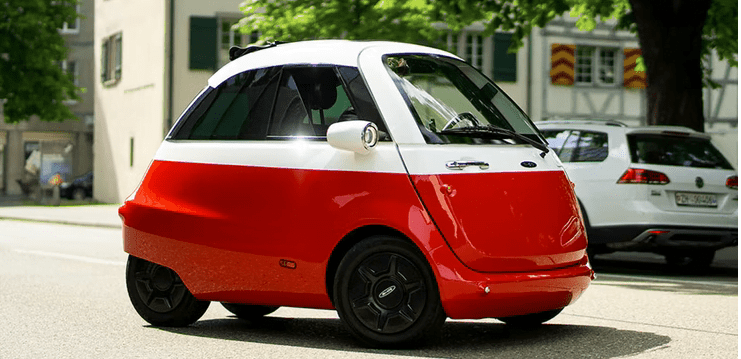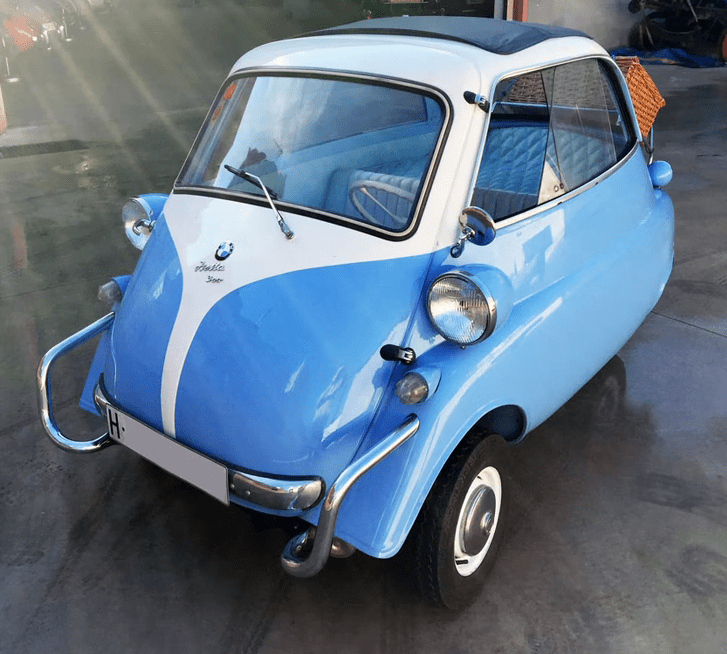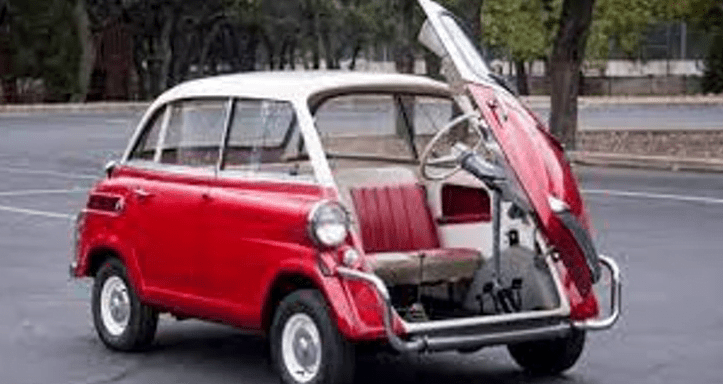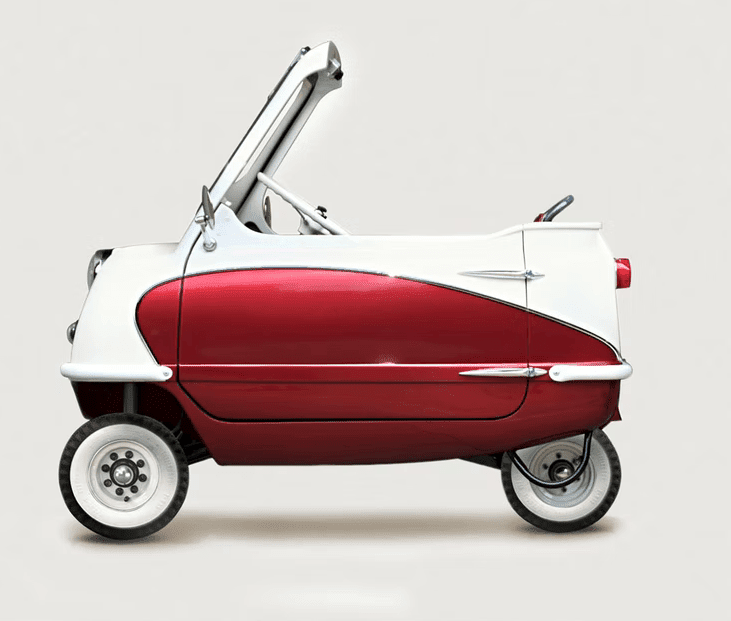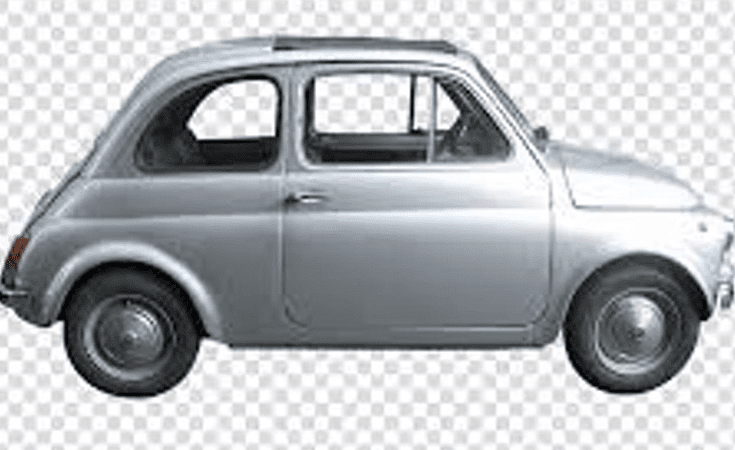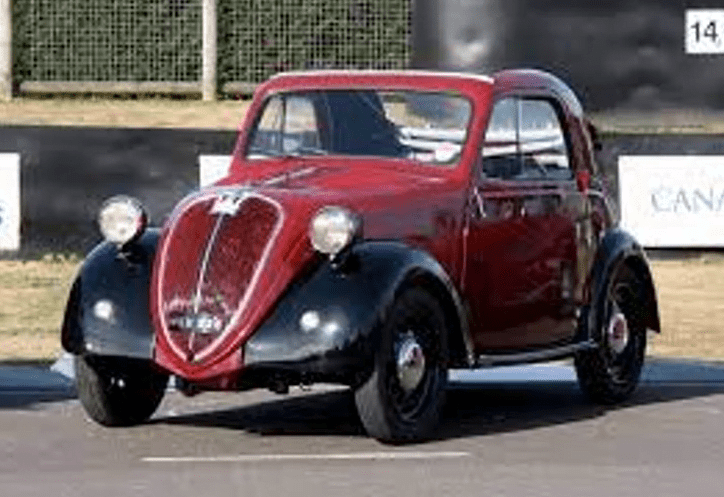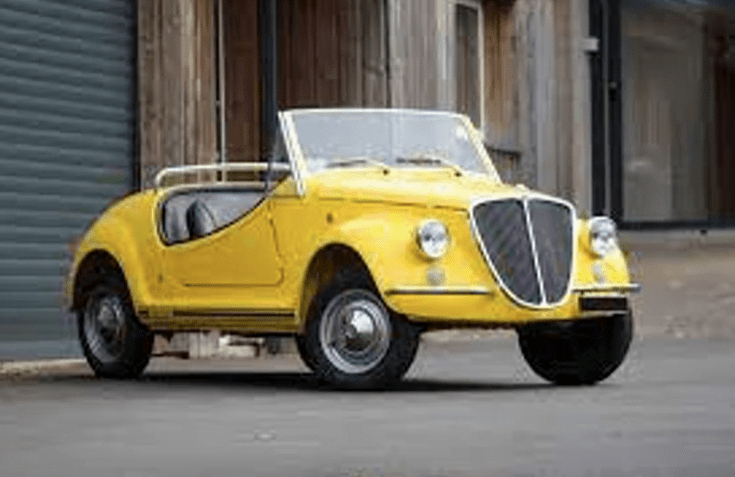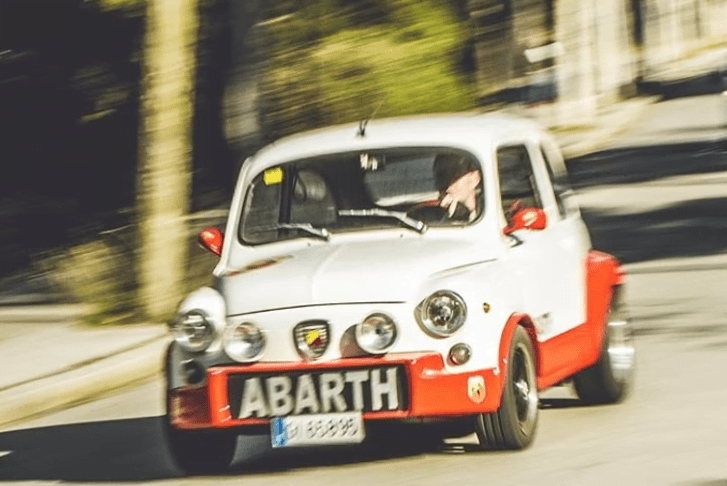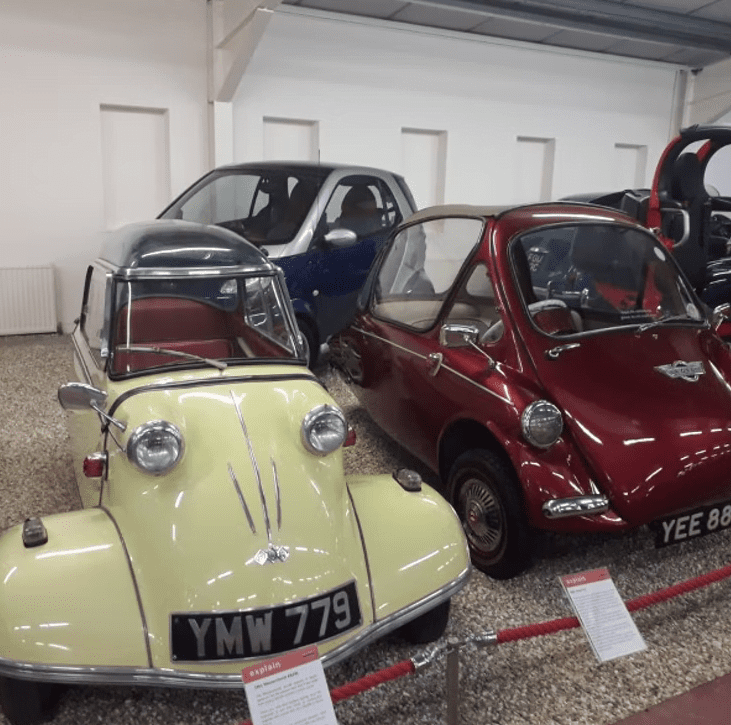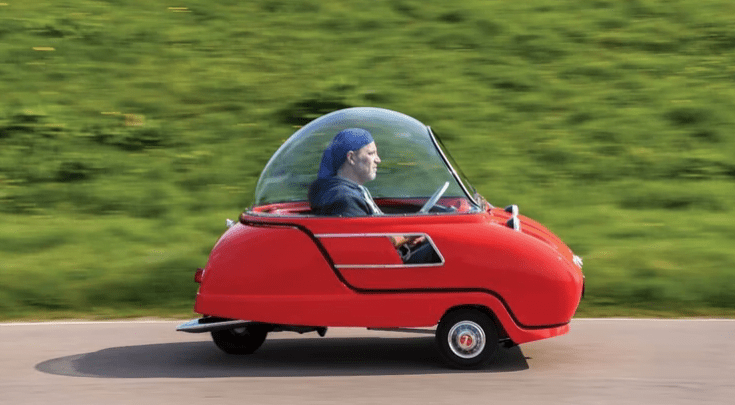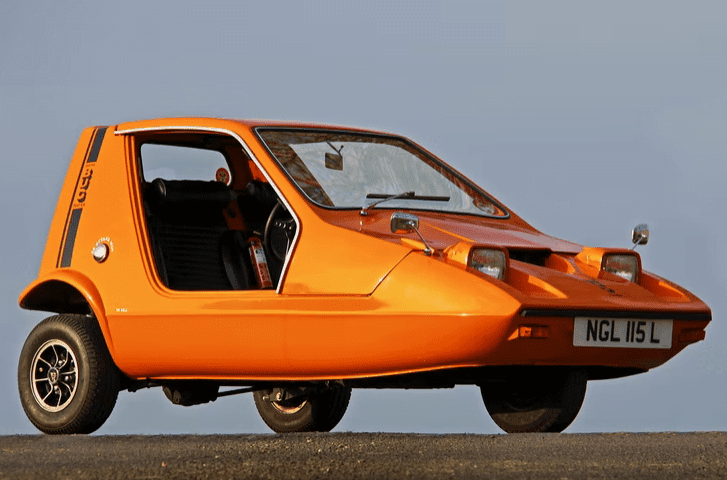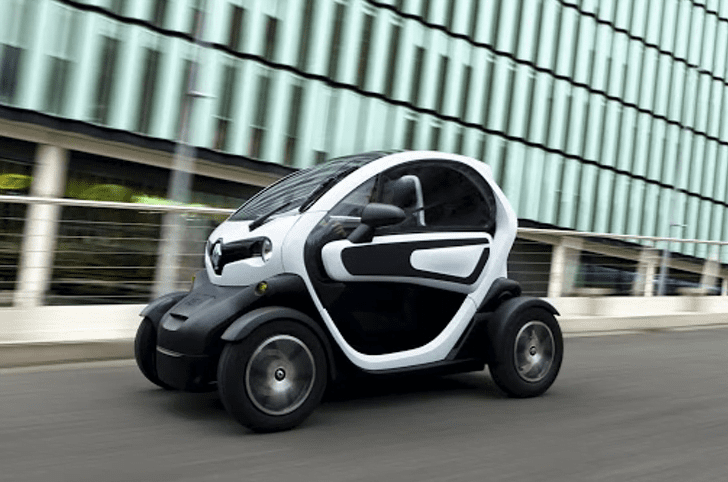What is a Microcar?
A microcar is a car (obviously) that has a 700cc (43 cu in) or less engine size, although some definitions vary based on weight and overall size of the car.
There are different types of microcar, all very similar but coming under different categories, like cyclecars, bubblecars, voiturettes, quadricycles, invacar, and kei cars.
Mazda Autozam AZ-1
A brief bit of history.
The term ‘microcar’ first began to be used post war, when it was expensive to tax cars and many people couldn’t drive anything except for motorbikes, which weren’t weatherproof and were therefore flawed.
This wasn’t the first time a roofed alternative to motorbikes had been used, though, as between 1895-1920, ‘voiturettes’ and ‘cyclecars’ became very popular. Leon Bollee was the first to register ‘voiturette’ in 1995, for his new motor tricycle. Between WW1 and WW2, it was a term used for the smallest category of Grand Prix cars, although they weren’t microcars really, as the maximum engine capacity was 1500cc (92 cu in).
The Type 13, a beautiful example of a racing voiturette.
After the 50s, the taxes for normal cars lowered so the point of microcars was more or less negated, as well as the rise of everyone’s favourite microcar usurper: the Mini! After that, it wasn’t until the oil crisis of the 70s that they became popular once again, and they are efficient and an increasing amount of them are electric and many people like that idea, increasing their popularity once more.
This seems familiar…
The best of Germany
After the war, many ex-aircraft manufacturers moved from planes to automobiles, completely ignoring trains. Many of these were bubblecars, because they were lazy and couldn’t be bothered to create new cockpit designs so just kept the plane ones. These made them very distinctive and somewhat like greenhouses inside. The cars pretty much had the footprint of these ‘bubbles’ as well, meaning there was very little room for people and even less for the engine, which lead to tiny engines being used.
It is unlikely to come as a surprise which one I’ve chosen for the Germans as it is quite possibly the most iconic and famous microcar ever: the BMW Isetta.
Bubbly!
This car is very similar to the work of Heinkel, although the headlights are fairly distinctive. Talking of distinctive, you’ll never guess what idiotic, I mean unique, design feature it has: 1 door at the front! No-one really knows why BMW thought this was a good idea, I think the point was to reduce length but to be honest it just means your more in danger in the event of a crash and you will get stuck in your garage if you go up against a wall.
That is a myth by the way, as the point is that it can’t reverse away from the wall, which is only partly true. To abide by motorbike road rules, microcars weren’t allowed to be able to reverse so the reverse gear was blanked off. This was an easily reversible modification and therefore many of them could park in a space effective way e way and have survivors to tell the tale.
But I digress.
The Isetta was introduced in 1955 and some 10,000 units were made until its demise in 1962. There were two engine choices; a 12hp 248cc option and the larger 13hp 298cc option, both single cylinders and both with a surprisingly fast top speed of 53 mph.
There was even a van and pickup version, as well as a cabriolet which somewhat sullied the bubblyness.
Someone probably just said that it had no luggage space. So they added space for 1 shopping bag.
Someone probably just said that it had no luggage space. So they added space for 1 shopping bag.
They just cut the rear quarter off. How imaginative
2 extra doors. That’s it, the Isetta 600
The best of Britain
Britain has a much less varied microcar history, as we have approximately 1 true microcar manufacturer, Peel (except of course, Clarkson). In fact, there are so few that all of them are relatively well known which made the selection process even harder for me. Thanks Britain.
Ad
Despite this, their was quite an obvious victor: the Peel P50.
Small. Not the word. Tiny, there we go.
A well known and loved icon, especially since Jezza reviewed it on Top Gear and proved that it is even better than a Ford bronco as a ‘go anywhere’ vehicle, as you can see here (its a link, I couldn’t be arsed to add another photo).
Between 1963-64, just 50 examples were made and only half still exist, although many replicas were made, making them worth huge amounts. The 49cc engine was interestingly in the side and only the rear wheel- singular – is driven by its 4.5 hp, which propels it to 60 in…never, but managing a top speed of 38mph.
There’s only one suicide door, and the luggage space is big enough for ‘one adult and a shopping bag’. In total, the car is a mere 1.4 metres long and 1 metre wide, with a total weight of 105 kg. Apart from its tinyness, this would be a perfect city car with only a 4.5 metre turning circle.
Like the BMW, there was a convertible (spider) version as well, which was surprisingly lighter than the normal one at 98kg.
Literally just chopped off the top, as it turns out
Apparently, there is still a P50 made which is very similar to the original, but with an electric motor.
The best of Italian
Italy has quite a few microcars, although most of them are considered more as ‘city cars’ than actual microcars, but I’ll still count them because otherwise this would be a completely unknown choice.
For that reason, I have chosen Italy’s answer to the Mini and, in my opinion, the best micro/city car crossover ever: the Fiat 500, a vehicle very close to my heart.
Cute!
Where to start?
Introduced in 1959, this mini motor (I can’t really use that in this company can I) was an instant success and sold almost 4,000,000 until it was killed off in 1975, to be replaced by the 126.
Interestingly, this one was known as the ‘Nuova’, or ‘new’ because Fiat made one in the 30s called the Topolino
Not quite as cute but it still has its charms.
Ad
Whereas the Topolino had 4 cylinders, the Nuova had only 2 with a combined size of 479cc, hence the ‘500’ (well 475 isn’t as catchy, is it?) located in the back. This is easily the biggest of the three, at almost 3 metres in length and a completely square front cross-section at 1.32 metres wide and tall.
The list of people who owned one of these brilliant cars is extensive, with a group containing Gordon Murray and Enzo Ferrari, two very reputable people.
The 500 had many iterations, like the L, F, sport and Gamine, not to mention the Abarth and one you may not know I own, the Giardiniera, Gardiner (that was sarcasm btw).
The Gamine is fairly similar to the regular but front engined and more like a Topolino.
The Abarth and Giardiniera are slightly different, though, as they had different engines; the Abarth with a 595cc engine and the Giardiniera with a 499cc flat (as in sideways) engine.
My very own Giardiniera, Luigi. (Coincidentally, this was taken at a microcar rally)
Wider, meaner, faster. Everyone, the Abarth Fiat 500.
Honourable mentions
Messerschmitt KR 200/170 (German)
Peel Trident (Britain)
Reliant Robin (Britain)
Bond Bug (Britain)
Microlino (Germany)
Renault Twizy (France)
FAQ: Microcars
What is an example of a microcar?
An example of a microcar is the Smart Fortwo, which is known for its compact size and efficient design. Other examples include the Fiat 500, Honda N-One, and the Mini Cooper.
Are microcars legal in the US?
Microcars are generally legal in the United States, but their specific regulations may vary by state. It is important to check with the local Department of Motor Vehicles (DMV) or relevant authorities to understand the specific requirements and regulations for microcars in a particular state.
How safe are microcars?
The safety of microcars can vary depending on various factors such as the specific model, design features, and safety technologies incorporated. Due to their small size, microcars may offer less protection in a collision compared to larger vehicles. However, advancements in safety technologies have improved the crashworthiness of microcars in recent years. It is advisable to research safety ratings, features, and reviews of specific microcar models to make an informed decision.
What is the smallest microcar?
One of the smallest microcars is the Peel P50, which holds the Guinness World Record for being the smallest production car ever made. It measures just 54 inches (137 cm) long and 41 inches (104 cm) wide.
Do you need a license for a microcar?
Yes, typically, you will need a valid driver’s license to drive a microcar. The license requirements may vary by country and state. It is important to check with the local authorities to understand the specific licensing requirements for operating a microcar in a particular area.
What make is a microcar?
Microcars are produced by various manufacturers. Some well-known manufacturers of microcars include Smart, Fiat, Honda, Mini, and Citroën.
Is a Smart car a microcar?
Yes, the Smart car, specifically the Smart Fortwo model, is considered a microcar. It is known for its compact size and urban-friendly design.
How fast is a microcar?
The top speed of a microcar can vary depending on the specific model and engine configuration. Microcars are generally designed for city driving and urban environments, so their top speeds may be lower compared to larger vehicles. On average, microcars may have top speeds ranging from around 60 to 80 miles per hour (96 to 129 kilometers per hour).
What are the benefits of a microcar?
Some potential benefits of microcars include their compact size, which allows for easier maneuverability and parking in crowded urban areas. They also tend to have better fuel efficiency, making them more environmentally friendly and cost-effective to operate. Additionally, microcars often have a lower purchase price and lower maintenance costs compared to larger vehicles.




